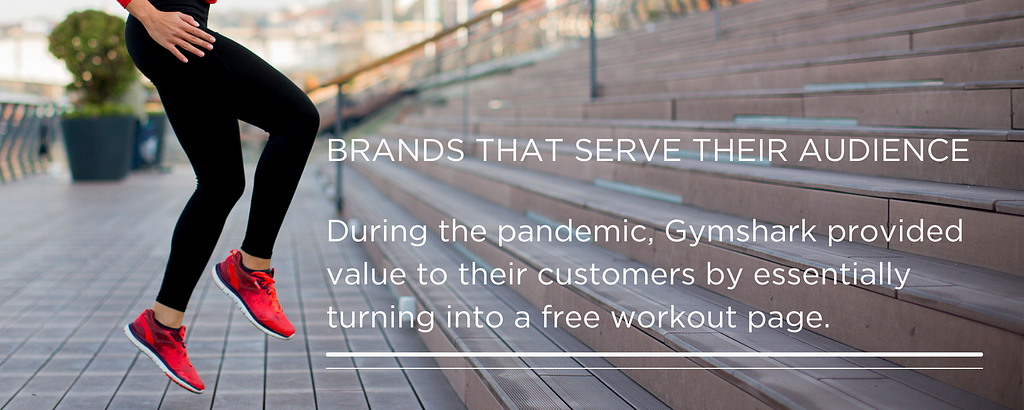Elevate your marketing by daring to do things differently

Building an effective digital brand takes dedication and authenticity. Too frequently, businesses pretend to be something that they aren’t, leading to superficial customer relationships that fizzle out.
As part of our monthly education series, Ascender alum Jordon Rooney, Founder and CEO of Built Different and Never Fear of Being Different (NFBD), joined us in March to break down what it takes to build an authentic digital brand. Jordon isn’t afraid to do things differently, and he dares you to do the same. Below are five key takeaways to help you develop a digital media strategy that focuses on keeping your brand’s purpose at the top of everyone’s mind, every day. Scroll to the bottom if you want to watch Jordon’s full presentation.

1. Positioning Your Brand
Bringing focus to your brand is how you communicate the importance and quality of your product or service. Jordon broke it down like this, “It doesn’t matter how good your product or service is if no one’s paying attention to it.” You have to recognize that your number one goal as a brand is to figure out how to win attention in three seconds or less because attention is more competitive than it’s ever been. This includes being able to identify directly with your audience so you can allow your business to stand out. Take a risk and put yourself out there to be judged, and let people decide whether or not they love your business. When your audience learns about your company, it is advantageous to become aware of how your audience describes you. Once the description becomes very specific, it will be apparent that you did an effective job at refining your brand positioning.
Brand Example: Airbnb set out to transform the way we travel. They took a risk and successfully accomplished positioning their brand, becoming category kings by operating in their own space, outside the sphere of more traditional hotels and vacation rentals.
2. Community Activation
Community activation is how you grow your brand. This process begins by determining the target audience for the product or service that your business offers. Targeting a specific group of people makes that audience (a.k.a. your potential customers) feel special and creates a strong sense of excitement around that product or service. The target community spreads the news to their friends, co-workers, and other interconnected communities, creating a solid connection to your brand’s largest community. The information eventually reaches the general market, who will associate your brand with the reputation of the communities who have adopted your brand. People trust their friends, making word-of-mouth advertising an important element, essentially creating brand ambassadors and awareness for your company. The common thread throughout community activation is building on touchpoints to create consistent awareness.
Brand Example: Judy, a company that sells emergency-kits for any disaster, attained community activation by promoting conversations about readiness. They encouraged conversations around preparing for crises and didn’t push their products. Activating your community leads to greater organic brand awareness.
3. Human-Centric Marketing
When a company only focuses on selling its product, people are more likely to make a decision based solely on cost. There isn’t any motivation pushing them to want to buy the product. Human-centric marketing focuses on creating a one-sided relationship where your business gives to the audience and doesn’t expect anything in return. By doing this, your audience begins to appreciate you and your brand, developing a desire to give your brand their attention and support. Audience support strengthens when you define your voice and stick to it, demonstrating that you know the value that you have to offer. You come across as authentic because you’re not just trying to close a sale. Posting meaningful content shows the audience that you’re investing in them and that you value their support, so don’t just post to post.
Brand Example: Gymshark, an athletic apparel company, practices human-centric marketing by posting images and videos that focus on people providing workout tips and leading exercise sessions. Sure, the instructors are wearing Gymshark clothing, but posts make the customer feel important by putting the attention on the progress and comfort of their workout.

4. Lifecycle of a brand
There are two types of brand building: superficial and authentic. Too often, people build superficial brands that lead to creating content purely for cheap clicks for attention. This leads to instant results (likes, retweets, and comments), but then you’re forced to create content that continues to get that attention and lives up to that expectation. So exhausting. When building an authentic brand, take the time to think about what you have to offer and serve your audience first. Value is built over time through unique and impactful connections that you create and nurture with your audience. Gradually, you become sustainable and marketable by growing your brand through digital word-of-mouth, not just by going viral.
Brand Example: Zoom has been around for years, but when the pandemic hit, people wanted to connect with others, and more and more people started using Zoom. They became more popular through word of mouth, illustrating their gradual sustainability.
5. Don’t Post and Hope
Social media is a focus group. From Linkedin to TikTok, the platforms are set up to allow you to test everything on micro audiences and determine what content will perform with a larger audience. Focusing on micro audiences saves your business valuable time and money. Use social media to give people free importance, such as making them ambassadors, calling them influencers, or giving them a discount code to share. Selecting a few people to partake in this will provide more awareness to your business and make these individuals loyal customers. Keep in mind that the algorithms are no longer in your favor as social networks become even more dictated by economics. If you don’t start now with social media platforms, it’s only going to get harder (and more expensive) for you in the future.
Brand Example: Pepsi utilizes social media by making different versions of their commercials and testing them on micro audiences. The commercial that the focus group likes the most becomes the commercial that they air on TV, saving the company money. You probably don’t have the same budget as Pepsi, but that shouldn’t stop you from using their strategies on a smaller scale.
Remember: Marketing isn’t just doing. Marketing is amplification. Following these tips will help your business be more successful by attracting attention and support from loyal customers.
Want More? Here’s Jordon’s Full Presentation.
https://medium.com/media/c3da67ff91d257179d6fcbb6c09fb5d7/href
From fledgling tech companies, healthcare innovators, and nonprofits to makers, creators, services and shops, Ascender is for Pittsburgh’s entrepreneurs. We help businesses of all types in the Pittsburgh region start and build a business through education and connectivity. See how Ascender can help you.
Connect with us
Learn more about Ascender: https://ascenderpgh.com/
Sign up for our newsletter or send us a note: info@ascenderpgh.com
Follow us: Twitter — Facebook — LinkedIn — Instagram
The 5 Building Blocks of an Authentic Digital Brand was originally published in Ascender on Medium, where people are continuing the conversation by highlighting and responding to this story.

